

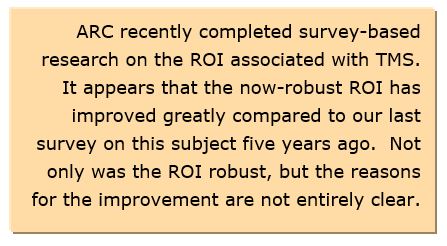
ARC Advisory Group did a survey on the return on investment (ROI) companies receive from the solutions used to manage their transportation. ARC performed this survey in conjunction with DC Velocity and eft (formerly known as eyefortransport). Sixty-three respondents (53 percent of total respondents) said they use transportation software as their primary solution to control transportation processes. We defined transportation management systems (TMS) as software that includes capabilities to help companies optimize transportation processes through simulation, network design, load consolidation and mode selection, and/or multi-stop route optimization.
This latest survey indicated that users are now receiving markedly better ROI from their TMS solutions than indicated in a similar survey ARC completed in 2011. Here are the 2011 results:
And here are the results from 2016:
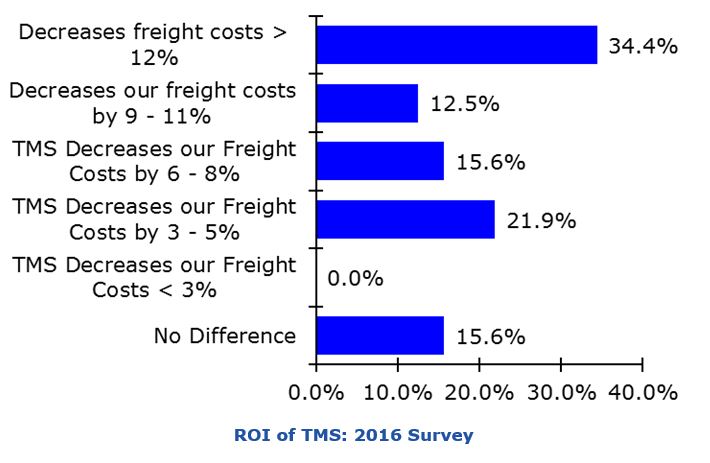
After the last survey, we rescaled the segments because of the large number of respondents – roughly a quarter of respondents - answering that they reduced freight costs by more than 10 percent. In the new survey, the top end of the scale was freight savings of more than 12 percent. But despite the rescaling, an even higher percentage of respondents – more than a third of respondents – reported getting freight cost reductions of over 12 percent.
We asked about service improvements in both the 2011 survey and this years’ survey. Freight cost reductions must not come at the expense of service. For the survey, we characterized “customer service” as the percentage of deliveries arriving within a designated four-hour delivery window.
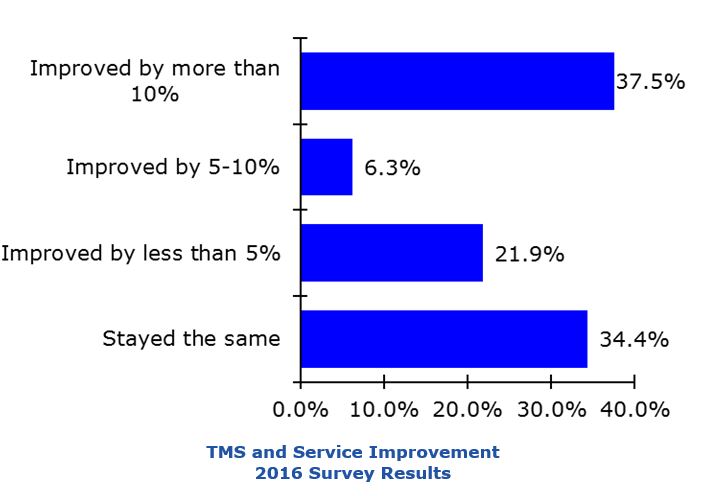
As was the case with the freight cost question, we rescaled the service question because of the large number of respondents reporting service improvements of over 5 percent in 2011. In 2011, over a quarter of TMS respondents reported getting service improvements greater than 5 percent after implementing a TMS. But in 2016, 38 percent of respondents reported service improvements of over 10 percent. Further, in 2011, 2 percent of respondents reported that service got worse after putting in a TMS, but none did in 2016. In both 2011 and 2016, about 34 percent of respondents reported that implementing a TMS made no difference to service levels.
Additionally, 44 percent of respondents reported increased ability to secure capacity based on their implementation of a TMS.
A software supplier’s performance is related to whether implementation project timelines are met. Most respondents did report that either the implementation timelines slipped or the software delivered did not fully reflect what they were promised.
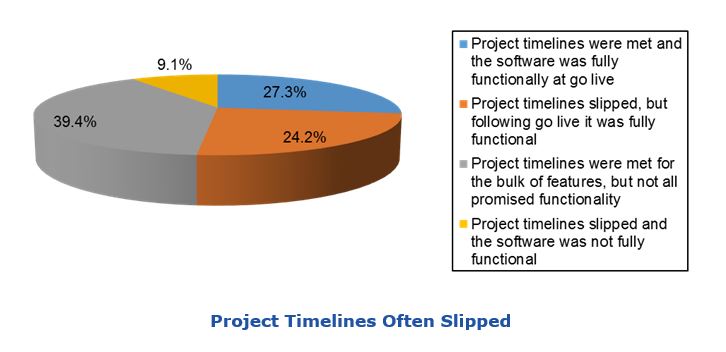
In fairness to TMS suppliers and system integrators, in our numerous interviews with supply chain managers involved in software implementations over the years, we learned that the managers often admitted that they were often at least partially responsible for any delays due to scope creep, poor project management, and/or poor change management on their part.
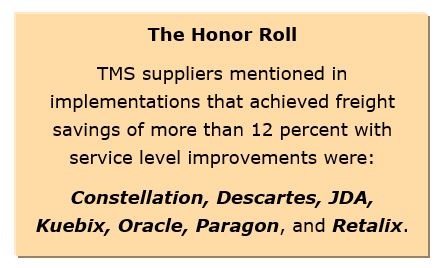
As only 12 percent of TMS respondents reported purchasing their solution under a software as a service (SaaS) arrangement, it’s not likely that the improved ROI reported is attributable to this.
Nor is it related to more fully utilizing all the capabilities of a TMS. In 2016, only 25 percent of respondents reported that they were using a TMS to synergistically manage inbound and outbound shipments. That is only a 6 percent improvement since the last survey. Further, far too many respondents, 44 percent, reported planning transportation at the site and local level, rather than finding the kinds of synergies that can result when TMS is planned centrally.
ARC can only conjecture that the improved ROI is attributable to increasing capabilities on the suppliers’ side, plus increasing sophistication on the users’ side.
The ROI associated with TMS is excellent and continues to improve. The main drawbacks reported involve project deadlines slippage or software being delivered without all the promised functionality. But the same is true of all enterprise software; and the fault for this cannot entirely be laid upon the software company. Clearly better change and project management could help improve that situation. Additionally, ARC is a strong proponent of implementing TMS without any (code-level) modifications. Modern software is a marvel of configurability; modifications are far less necessary than they used to be.
To help companies maximize the ROI they receive from their TMS solutions, ARC’s Managed Transportation Services Evaluation and Selection Guide and associated services provide a structured process to help identify and weigh the appropriate selection criteria for their respective cultures and specific transportation management requirements.
If you would like to buy this report or obtain information about how to become a client, please Contact Us
Keywords: Transportation Management System, TMS, ROI, Service, ARC Advisory Group.

